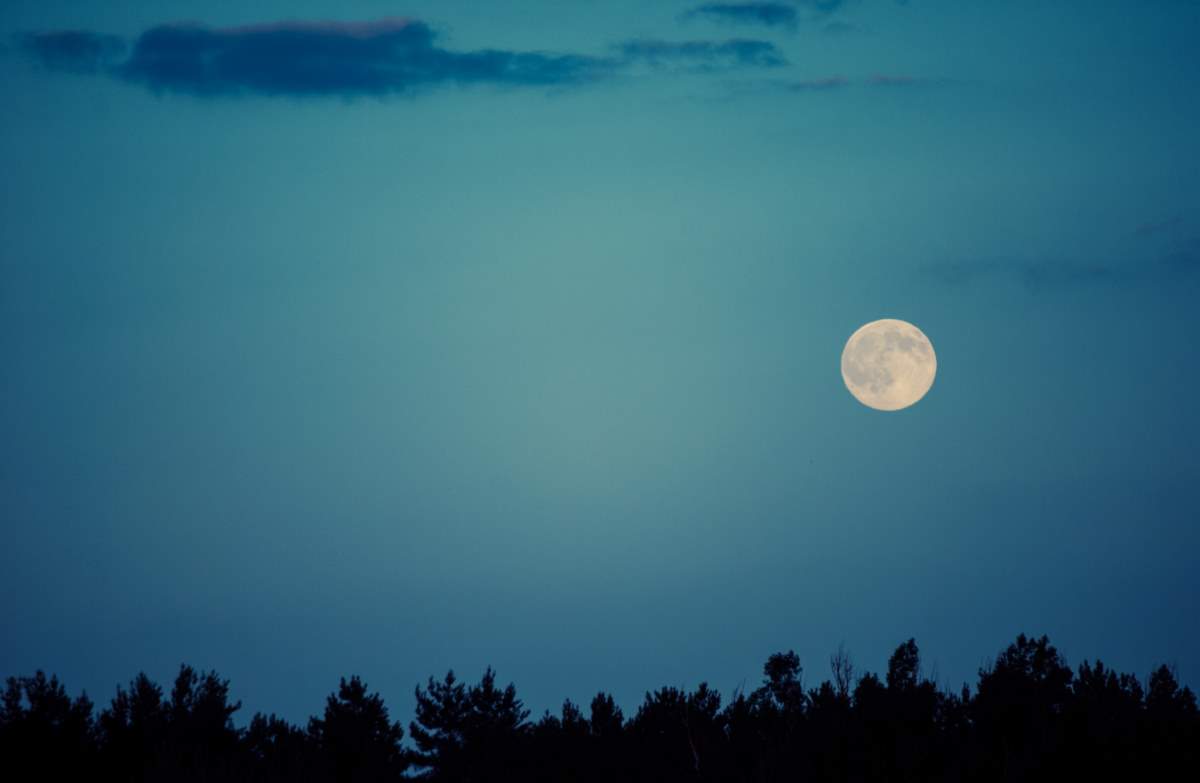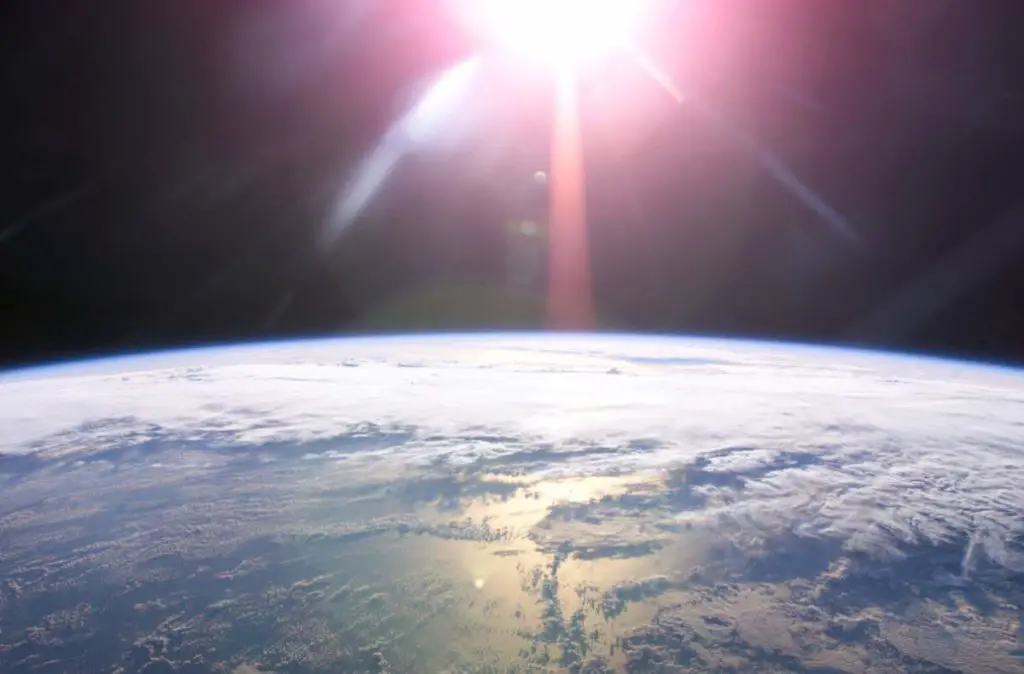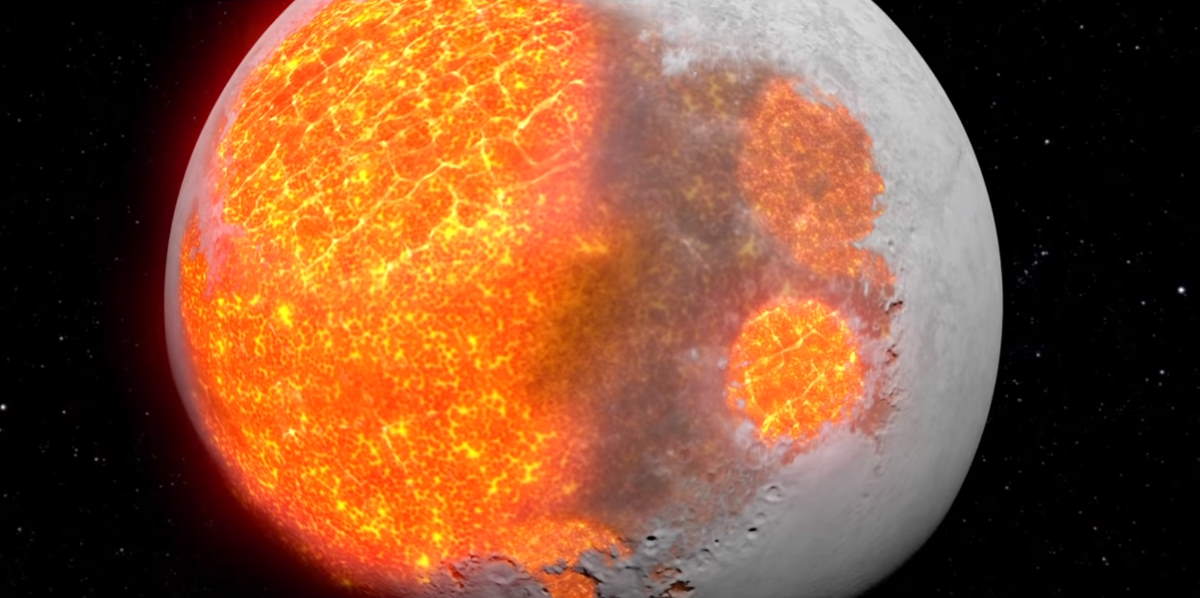One Side of the Moon Continually Facing Earth is
Why do we see only one side of the Moon? You have probably heard references being made to the "dark side" of the Moon – there's even a Pink Floyd album with that name. But, in fact, there's no "dark side" of the moon. Because our satellite is not illuminated by the Earth, it is illuminated by theSun. All the surface of the
The source of the "dark side" misconception is that we always see the same side of the moon from the Earth. We can call it the "near side", and we don't see the other side from Earth, so, the "far side" is a more accurate term than the "dark side". But, why it is like that? Why do we only see one side of the moon? Why there is a "far side"?
It seems even weirder as we know that the moon also rotates on its own axis – so, one should expect to get a full picture of our satellite as it rotates. But we don't. We always see 50% of the moon (in fact, a bit more – we'll talk about it later). Why?
Tidal Locking is the reason why we see only one side of the moon
The simple answer is that we only see one side of the moon because the moon rotates around the Earth at theexact same angular speed (in fact it's not exactly true – we'll talk about it later too) as it rotates around its own axis so that the same side of the moon is constantly facing the surface of the Earth.

As a result, a "moon day" (which has the same meaning as an Earth day – the amount of time it takes for the moon to rotate around itself once) is about 4 weeks long. If the moon didn't rotate at all, we would see all of its sides – it would alternately show its near and far sides to Earth. Its rotating is the very reason that we see always see the same face of the moon.
What's more,
If the moon was spinning less than once per orbit, the Earth would have pulled the other way, speeding its rotation. Whatever the case it took just a thousand years for the Earth's pull to adjust the moon's spin enough that one rotation of the moon corresponded to one trip around the Earth, leaving one side forever locked facing away.
This phenomenon is called"tidal locking" – the situation when an object's orbital period matches its rotational period. Our moon is a great example of that. An extreme example is the case of Pluto and its largest satellite Charon. Charon is such a large satellite compared to Pluto that they are tidally locked together. In general, if both the mass difference between the two bodies and the distance between them is relatively small, each may be tidally locked to the other. This means that Pluto only sees one face of Charon and vice versa.
This wasn't always the case – the moon was not tidally locked when it first formed after Earth is hit by a planet-sized body around 4.5 billion years ago. Moon's initial spin and its orbit period are almost certainly not in sync with each other (we don't know which was faster).
In the beginning, the moon was much closer to Earth (see notes 1) and the Earth's gravity deformed the moon into a slight oval, with one of its bulges facing Earth. Those bulges quickly swung out of alignment thanks to the moon's asynchronous spin and orbit, but Earth's gravity continually squeezes them back again.

We see more than 50% of the Moon's surface, actually
Here is the "we'll talk about it later" part. In fact, we see more than one face (more than 50% of the surface of the moon). Because the moon's orbit is slightly elliptical. This gives us peeks beyond its average eastern and western horizons. What's more, the axis of the moon is tilted. This reveals more of the lunar north and south poles. With these extras, we can see 59% of the surface of the moon. 41% is still the "far side", we cannot see it from the surface of Earth.
Until 1959, nobody has seen the far side of the moon. In 1959 a Soviet spacecraft named Luna 3, or E-2A No.1 was launched as part of the Soviet Union'sLuna programme (a series of robotic spacecraft missions sent to the Moon by the Soviet Union between 1959 and 1976). It was the first-ever mission to photograph the far side of the Moon.
There's a great video published by the youtube channel "MinuteEarth" which explains why we only ever see one side of the Moon. You can watch the video below:
Here's another video on the same subject.
Will Earth become tidally locked with the Sun?
Probably not. In general, closer objects are more likely to experience tidal locking. If the Earth was too close to the Sun, the answer might be yes – but in this case, there would be no life on it.
Far-away objects are less likely to experience dramatic differences in gravity between their two sides, resulting in smaller bulges, and the bulges themselves will feel less of a pull. For many stars, the habitable zone – the ring of space within which planets are able to sustain life – overlaps partially with a zone that makes planets likely to be tidally locked to their star, making them significantly less habitable – but it appears that such a fate is not in store for the Earth.
On a tidally locked Earth, or any other planet, one side constantly lit by the Sun or its star, while the other side is experiencing an eternal night. This makes life on that planet very unlikely – but atmosphere may play a role here: while the temperature on the dark side is extremely lower than the lit side, there would be constant circulation of atmosphere – from the lit side to the dark side. Maybe, just maybe, that stream would make the planet livable – but would also lead to extraordinary strong storms, with a wind speed of several thousands of miles per hour. These extra-hot and ultra-strong winds would strip the lit side off of its oceans.

If life somehow manages to hang in there, it would be a very, very tough. Maybe there would be just some underground unicellular organisms.
But we're lucky, as mentioned above, the Earth won't get tidally locked. But, there are still some horrible ways that our planet could die.
Notes
- The Moon's orbit is getting larger, at a rate of about 3.8 centimeters per year. Today, the Moon's orbit has a radius of about 384,400 km (238,855 miles) – but in the beginning, it was much closer. The reason for the increase is that the Moon raises tides on the Earth. Because the side of the Earth that faces the Moon is closer, it feels a stronger pull of gravity than the center of the Earth. Similarly, the part of the Earth facing away from the Moon feels less gravity than the center of the Earth. This effect stretches the Earth a bit, making it a little bit oblong. We call the parts that stick out "tidal bulges." The actual solid body of the Earth is distorted a few centimeters, but the most noticeable effect is the tides raised on the ocean. Now, all mass exerts a gravitational force, and the tidal bulges on the Earth exert a gravitational pull on the Moon. Because the Earth rotates faster (once every 24 hours) than the Moon orbits (once every 27.3 days) the bulge tries to "speed up" the Moon, and pull it ahead in its orbit. The Moon is also pulling back on the tidal bulge of the Earth, slowing the Earth's rotation. Tidal friction, caused by the movement of the tidal bulge around the Earth, takes energy out of the Earth and puts it into the Moon's orbit, making the Moon's orbit bigger (but, a bit paradoxically, the Moon actually moves slower!). The Earth's rotation is slowing down because of this. One hundred years from now, the Earth day will be 2 milliseconds longer than it is now. This same process, which continues at least 4.5 billion years (since the Moon was formed), also affected the Moon itself, but this time, our satellite was slowed down by the tides raised on it by the Earth. Because the Earth is so much larger than the Moon, the tidal locking of the Moon took place very quickly, in a few tens of millions of years.

Sources
- "Why do we only see one side of the moon?" on astroquizzical.com
- Tidal locking on W
ikipedia - Luna 3 on W
ikipedia - Luna programme on W
ikipedia - What is tidal locking? on spaceanswers.com
- Is the Moon moving away from the Earth? by Britt Scharringhausen on curious.astro.cornell.edu
- Author
- Recent Posts
![]()
Source: https://ourplnt.com/why-do-we-only-see-one-side-of-the-moon/
0 Response to "One Side of the Moon Continually Facing Earth is"
إرسال تعليق